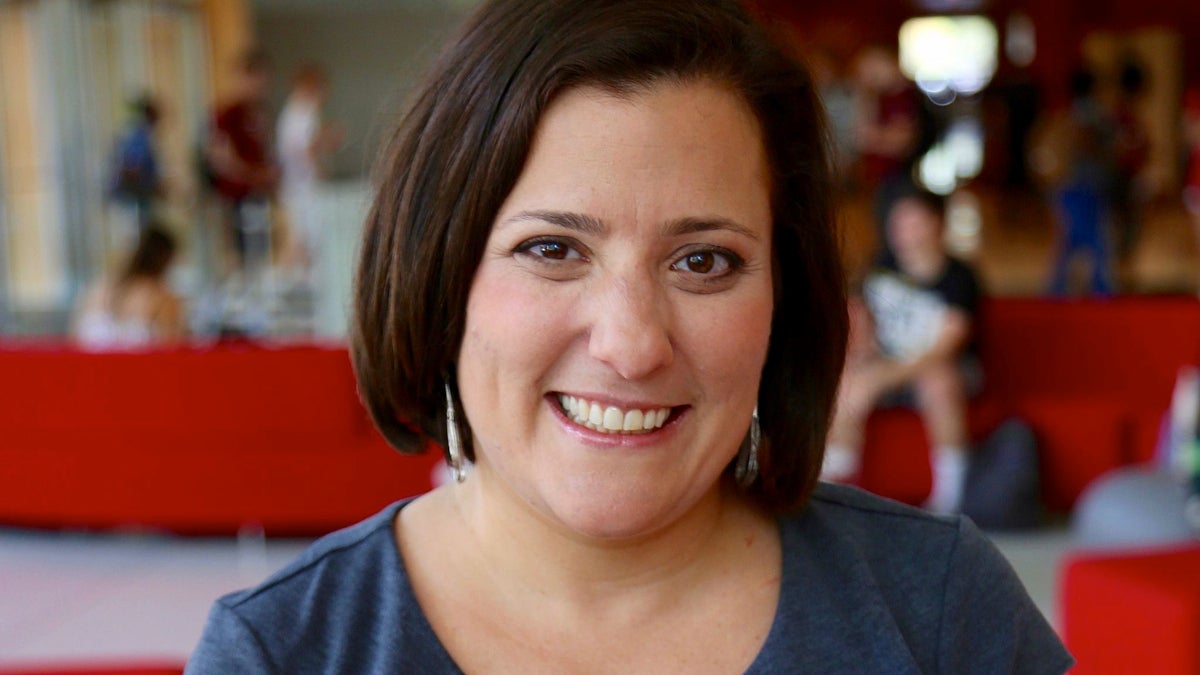Study: One-third of community college students need better access to nutritional food

Temple University Professor Sara Goldrick-Rab. (Sara Goldrick-Rab via Wikimedia Commons)
A recent study shows that one in three community college students reported that they didn’t have enough access to nutritional food.
Temple University Professor, Sara Goldrick-Rab, conducted the “Hungry and Homeless in College” study to assess the role of food and housing for community college students.
The study was conducted through the Wisconsin HOPE Lab (established by Goldrick-Rab) and the Association of Community College Trustees.
To better understand how the study approached the problem, it’s helpful to understand the terms they used.
Homelessness: Not having a place to live; often residing in shelter homes, cars or abandoned buildings.
Housing insecurity: Broader set of housing challenges such as inability to pay rent or utilities or having to move frequently
Food insecurity: Limited availability of nutritional food or the ability to acquire nutritional food in a socially acceptable manner. For example, dumpster diving is not a socially acceptable way to acquire healthy food.
The study, which included more than 33,000 students at 70 community colleges in 24 states, found that a third of the students were food insecure. It also found half of community college students were housing insecure and 14 percent were homeless. The study also indicates community college students who come from foster homes and students who have children have higher probabilities of experiencing food and housing insecurity.
“Two in three community college students cannot say they have regular access to nutritional food that they can acquire in a social acceptable manner,” Goldrick-Rab said. “In addition, the very lowest level of food insecurity, the kind that’s associated with hunger, was happening for one in three students.”
Some empathetic community college students have started food pantries to assist classmates experiencing food insecurity. While food pantries are helpful, Goldrick-Rab said, they don’t solve the underlying issue.
“Frankly, a food pantry is a Band-Aid. And it’s an OK one. It’s what you do when you have no food. You go to the pantry.
“But we should be preventing people from even needing to go to a food pantry, and we should be giving them more reliable access to food than whatever is on the shelf in the pantry on a given day.”
Furthermore, the study contradicted the idea that not having enough food and a stable place to live only affect students in urban and poverty stricken areas. It’s a problem everywhere.
So how much responsibility do higher education institutions have in making sure students have access to nutritional food and housing?
“This is a really big question,” Goldrick-Rab said. “We haven’t designed that responsibility. There isn’t a policy that says it is the college’s responsibility to deal with this. This is part of the debate and the discussion right now.
“Is it reasonable to ask community colleges in particular, which are so strapped for resources to begin with?” she said. “To ask them to provide these supports, it’s a big ask.”
If institutions are given the resources, Goldrick-Rab said, then it becomes their responsibility to help students taking care of food and a place to live.
She also emphasized the importance of making investments in food and housing assistance programs in community colleges. A follow-up to this study includes assessing the efficacy of such programs.
WHYY is your source for fact-based, in-depth journalism and information. As a nonprofit organization, we rely on financial support from readers like you. Please give today.



